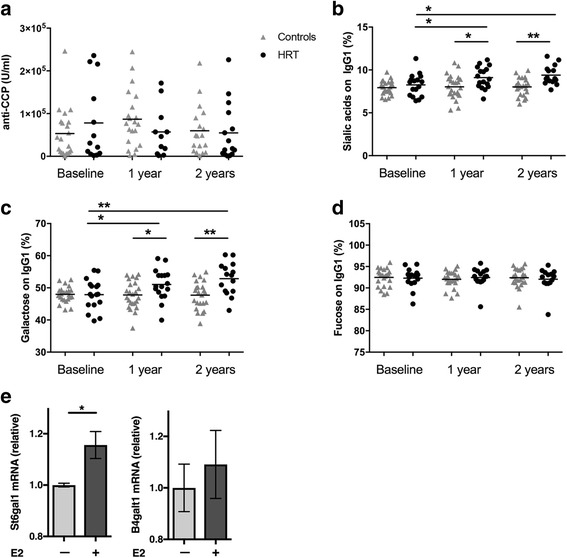Fig. 4.

Estrogen increases immunoglobulin G (IgG) glycosylation in postmenopausal patients with rheumatoid arthritis (RA). Forty-nine postmenopausal women with active RA in a randomized controlled trial were receiving either hormone replacement therapy (HRT) or no HRT. Serum samples were taken at baseline and after 1 year and 2 years of treatment. a Anticitrullinated protein antibody concentrations (n = 20–29; 7 anti-cyclic citrullinated peptide [anti-CCP]-negative patients were excluded from further studies). Mass spectrometry-based analysis of (b) sialic acids, (c) galactose, and (d) fucose on the Fc portion of IgG. Statistical analysis was performed with t tests at selected time points, as well as an investigation over time in HRT-treated individuals. *p < 0.05, **p < 0.01 (n = 17–25). Groups are presented with a bar indicating mean with SEM. e Messenger RNA (mRNA) expression of St6gal1 and B4galt1 from B cells isolated from peripheral blood collected from healthy donors and stimulated with CpG, interleukin-2, and goat antihuman IgA/IgG/IgM F(ab′)2 fragments for 5 days to induce plasmablast differentiation. For the last 48 hours, the cells were stimulated with the presence (+) of estrogen (E2) 10− 8 or absence (−) of E2. Statistical analysis was performed with Student’s t test. *p < 0.05 (n = 3). Values are indicated as scatter dot plots with means indicated with a bar
